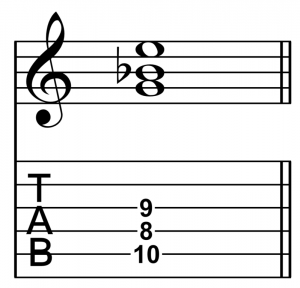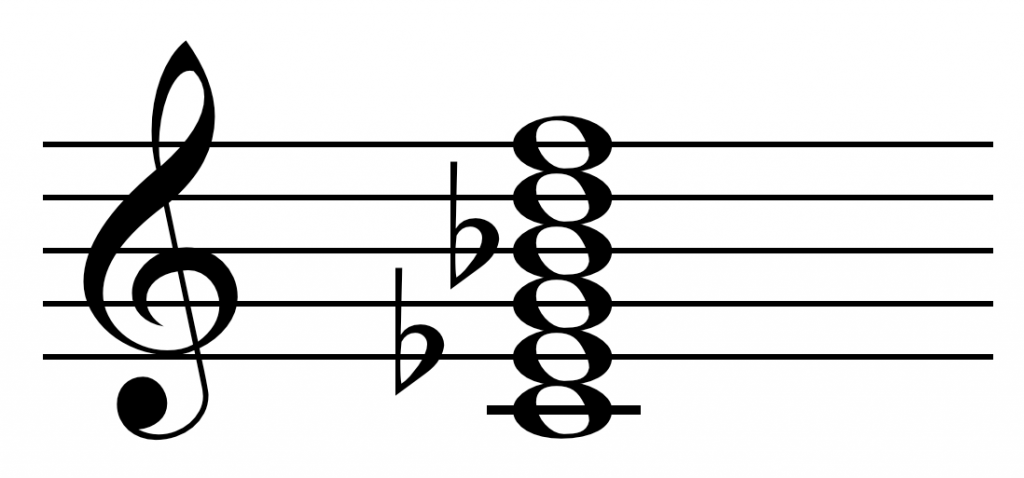Harmony
Harmony is what you get when you play two or more notes at the same time. It’s one of the most important concepts in music — the building block of chords, song structures, and all sorts of performances. Along with rhythm and melody, it’s one of the three main concepts in music.
You can think of harmony as the “vertical” structure of music, whereas melody is its “horizontal” structure. In other words, melody describes the way that one note follows another over the course of time, whereas harmony describes the way notes stack on top of each other at the same time. Usually in music you’ll have both harmony and melody going on at the same time.
The word “harmony” is sometimes used in a very broad sense, covering pretty much any kind of interplay between multiple notes. But for this article we’ll use it more narrowly so that it’s easier to see the difference between the concepts of harmony, unison, and counterpoint.
| Harmony | Unison | Counterpoint |
| Two different notes being played at the same time | Two voices or instruments playing the same note at the same time | Two voices or instruments playing different (or the same) notes at different times |
Harmony and unison are easy to understand, but counterpoint is a little harder until you hear it. Listen to this group of students singing Row, Row, Row Your Boat.
- They start off singing in counterpoint, with each student singing different notes at different times.
- At the end, in the last line, they sing “life is but a…” in unison…
- and then the word “dream” in harmony (though they enter the harmony at different times, so it’s a little like counterpoint right at first!)
Examples
“Call Your Girlfriend” by Erato
In “Call Your Girlfriend,” three performers are singing the same lyrics in the same rhythm, but following very different melodies. The result is a haunting sound that countless singers have tried to imitate in the last few years. This video came out in 2011, but it’s using basic ideas of harmony that are hundreds of years old.
“Ballade no. 2” by Chopin
For the first couple of minutes, the performer is playing almost constant harmony on the piano. Notice how he plays three or four notes at once, mostly simultaneously (though there are a few “grace notes” that fill in the cracks). Then, around 2 minutes in, he goes nuts and starts playing crazy counterpoint with very little harmony. The harmony returns about a minute later.
Importance and Purpose of Harmony
There are all sorts of different kinds of harmony, from the chords you strum on your guitar all the way to complex choral arrangements written for 30 voices all at once. Harmony is incredibly important for groups of musicians. Imagine if all we could do was play the same notes at the same time — how boring! Harmony is part of what gives music its infinite potential for variety and new ideas.
Harmony is also important for solo musicians on certain instruments, especially piano and guitar. Some instruments cannot play harmony because they can’t produce multiple notes simultaneously — this is true of woodwind and brass instruments, for example. On the other hand, a stringed instrument can play multiple notes simultaneously — for example, a six-string guitar can play up to six simultaneous notes, resulting in six-part harmony.
The human voice is usually considered to be monophonic, i.e. an instrument that can only play one note at a time. However, there are a few singers who have mastered the art of overtone singing, a rare technique that allows them to sing two notes simultaneously!
How to Identify and Play Harmony
Listening
Harmony is easy to identify when all the different notes are being played on the same instrument. For example, when you hear two flutes playing together, it’s easy to hear whether they’re playing different notes at the same time. Similarly, when you listen to a group of singers you’ll be able to tell when they’re singing different notes.
Reading
Harmony is marked the same way in both sheet music and tablature: it’s when you see two or more notes stacked directly on top of each other, meaning you should play them at the same time:
Playing
As long as you’re playing a polyphonic instrument (one that can produce more than one note at a time), it’s easy to play harmony. Just pick any two random notes!
If you want to play something that sounds a little nicer, try this C minor chord:
Middle finger: Eb
Little finger: G


